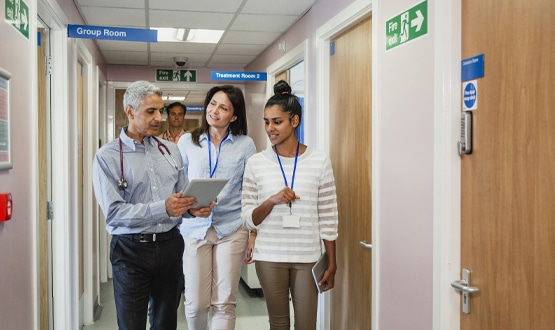Salisbury has its own Clinician’s View
- 5 January 2012
Salisbury District Hospital’s IT team has developed an application to give clinical staff access to all patient information on a single page called Clinician’s View.
Details of patients’ tests, diagnoses and treatment are held in a number of areas within the trust’s computer systems.
Clinician’s View brings together all information sources electronically in a format that can be customised by the clinicians themselves.
Head of informatics Peter Gill said Clinician’s View has a banner at the top holding general patient information, such as their ward and the name of their consultant.
Underneath this, there are widgets containing different parts of a patient’s record that can be moved around, hidden or made visible on the screen in whatever way a doctor wants.
Access to Clinician’s View is via a log-in and on the same basis as a clinician would have access to a patient’s paper records.
Gill said a new development is also being piloted on one ward and in outpatients that allows clinicians to click through to get more information from one of the hospital’s other departments.
Twenty of the hospital’s 55 departments were now connected, with five more going live in the next month.
Clinicians from each specialty chose five to ten key data items that they considered important for doctors treating a patient to see.
Gill said there were inevitably issues with interfacing with the other departments’ systems and these had to be tackled “one by one”.
“We had a huge amount of data flowing in real time into a big data warehouse from these systems anyhow, and it’s our own environment," he said.
"As a consequence, we can expose data in that warehouse to the [Microsoft] SQL database behind Clinician’s View without any difficultly.”
Salisbury is one of the ‘iSoft7’ group of trusts in London and the South that chose to stick with their existing iSoft patient administration systems ahead of the National Programme for IT in the NHS.
It also adopted database technology from AxSys in 2008 to bring together clinical information, while waiting for a ‘strategic’ solution from the programme.
Alongside this, the IT team has a history of in-house developments. It created an electronic handover tool called Consultant’s List / Hospital at Night that has been given free to seven other hospitals and sold at a small cost to two more.
Gill said the hospital was also looking to commercialise Clinician’s View, but recognised that a lot of the value was the connections it made to existing systems.
He said that when the trust went to market to see what a similar product would cost the answer was around £750,000; so it decided to do the development in-house.
Clinician’s View was first piloted in April 2011 and went live for 2,000 users across the trust in August that year. The development has cost about £50,000 in infrastructure and programming time so far.
Gill explained that the development of Clinician’s View was part of a five-year strategy for the trust to create its own electronic patient record at a total expected cost of £500,000.
He recognised there were “huge risks” associated with doing the work in-house, but said the strategy was working well so far.
Graham Branagan, consultant general and colorectal surgeon, said Clinician’s View was proving to be a real asset for staff.
“Although different pieces of information such as the latest test results would previously have been available from several databases, clinical staff can choose what they need to see easily and quickly in one place, while they are with their patients,” he said.




